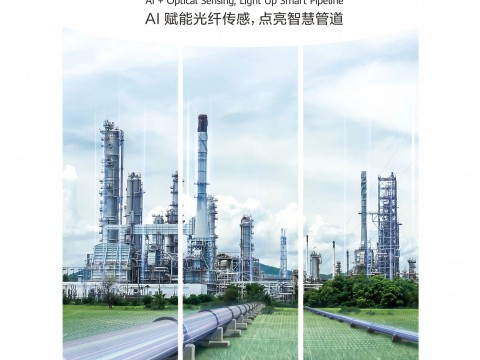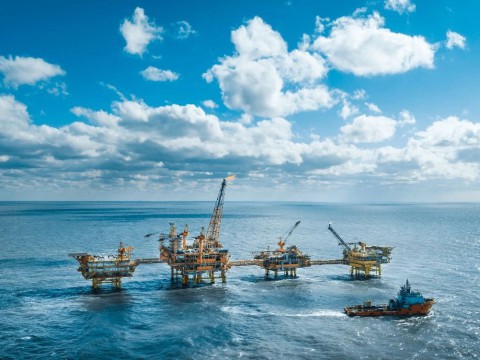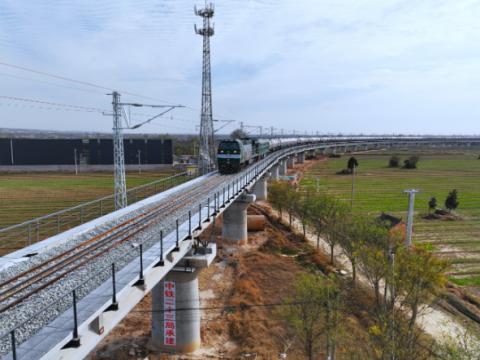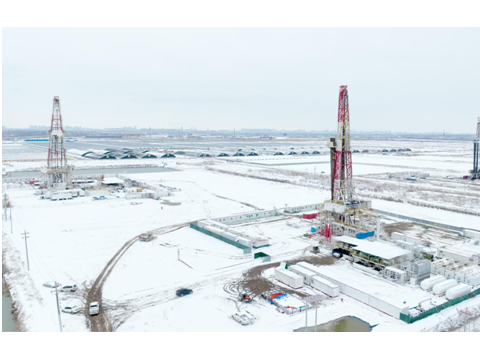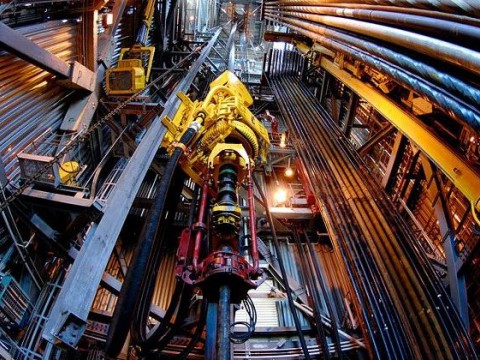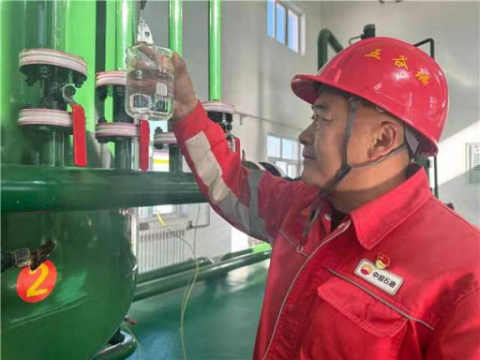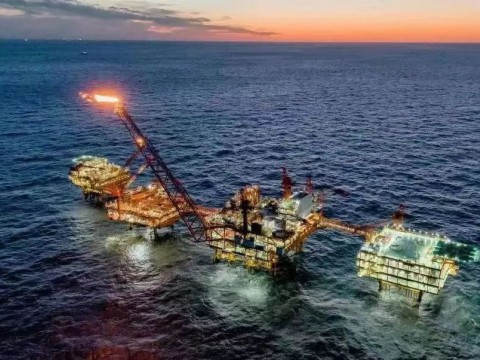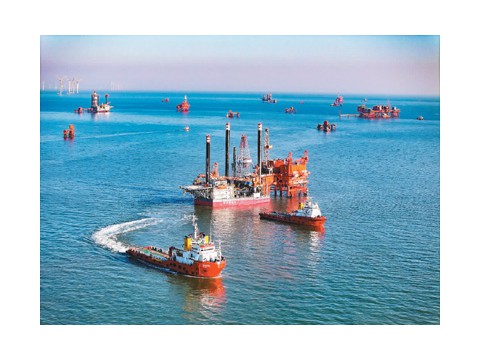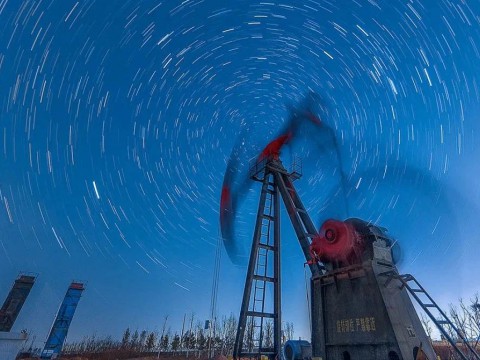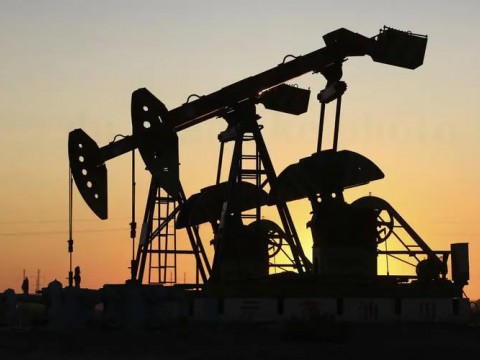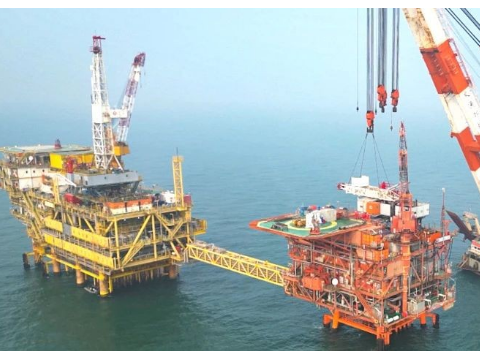据阿拉伯贸易网2022年10月18日伦敦报道,根据研究公司彭博新能源财经(BNEF)的《2022 碳捕获、利用和储存(CCUS)市场展望》报告,到2030年,全球碳捕获能力将在目前水平的基础上增加6倍,达到每年2.79亿吨二氧化碳捕获量。市场的大幅增长导致2030年的预期碳捕获能力比去年增加44%。
CCUS技术是石化和水泥等难以减少碳排放行业所需的关键技术,也是通过安装碳捕获设备的天然气厂提供全天候清洁能源所需的关键技术。尽管如此,根据BNEF的研究,尽管该行业在过去两年显著加速发展,但全球碳捕获能力的部署速度还不够快,无法在本十年结束时实现气候目标。
如今,大部分的碳捕获能力都用于从天然气加工厂收集二氧化碳,并用于提高原油采收率。到2030年前,大部分碳捕获能力将用于电力部门,用于低碳氢和氨的制造,或用于减少工业来源的排放。
现今捕获的二氧化碳总量
如今每天全球捕获的二氧化碳总量为4300万吨,占全球排放量的0.1%。如果所有已宣布的可能项目都投产,到2030年前,每年将捕获2.79亿吨二氧化碳,占目前全球排放量的0.6%。
捕获的二氧化碳的用途也将发生重大变化。去年,大约73%捕获的二氧化碳用于提高原油采收率。到2030年前,储存在地下深处的二氧化碳将使采油作业成为主要目的地,其中66%的二氧化碳将流入专门的储存地点。推动这一变化的是鼓励储存而非利用二氧化碳的立法,以及旨在使用碳捕获和储存(CCS)作为脱碳路线的项目,这些项目必须储存二氧化碳以实现其目标。
BNEF的CCUS分析师、报告的主要作者戴维·路易斯·马德里表示:“CCS正开始凸显优势。它现在被用作脱碳工具,这意味着二氧化碳需要被储存起来。在工业或发电点源附近缺乏二氧化碳运输和储存地点可能是CCS发展的主要瓶颈。但我们已经看到满足这一需求的项目大幅增加。”
全球温室气体排放
尽管碳捕获项目公布数量迅速增加,但该行业仍远远未能减少全球二氧化碳排放。为了在2050年前实现全球气候变暖在2摄氏度以下的目标,全球将需要在2030年捕获10亿到20亿吨二氧化碳,这比目前的计划高出一个数量级。立法者已经意识到这种不匹配,并正在加大对该行业的支持力度。
美国通过的《通货膨胀削减法案》将CCUS的税收抵免提高了70%,为CCUS技术在石化、钢铁、水泥和一些地区的电力部门提供了可行的商业案例。诸如此类的激励措施意味着,美国等国家将继续在CCUS方面处于全球领先地位。美国的税收抵免现在非常慷慨,而且该法案将加速公布乙醇和石化行业以及直接空气捕获项目,为自愿型市场提供高质量的碳补偿。
BNEF可持续原料主管Julia Attwood说:“到2030年达到2.79亿吨碳捕获能力只是冰山一角。”“我们还没有看到这些信用的全部影响,这使得这一展望对碳捕获和储存的未来是一个相当保守的观点。由于美国的开发商急于确保他们在2032年截止日期前获得信用。我们预计在今年,特别是在美国看到另一次跨越。”
李峻 编译自 油价网
原文如下:
Global carbon capture capacity 'to rise sixfold by 2030'
The global capacity for carbon capture in 2030 is set to increase sixfold from today’s level, to 279 million tonnes of CO2 captured per year, according to research company BloombergNEF’s (BNEF) 2022 CCUS Market Outlook. Drastic growth in the market has led to a 44% increase in expected 2030 capacity compared to last year’s outlook.
Carbon capture, utilisation and storage (CCUS) is a key technology needed to decarbonise hard-to-abate sectors such as petrochemicals and cement, and to provide 24/7 clean power through gas plants fitted with capture equipment. Still, despite significant acceleration in the sector in the past two years, the world’s capacity for carbon capture is not being deployed fast enough to meet climate goals at the end of the decade, according to BNEF research.
Today, most capture capacity is used to collect carbon dioxide (CO2) from natural gas processing plants and used for enhanced oil recovery. By 2030, most capture capacity will be used for the power sector, for the manufacture of low-carbon hydrogen and ammonia, or to abate emissions from industrial sources.
Carbon captured today
The amount of CO2 being captured today is 43 million tonnes, or 0.1% of global emissions. If all the likely projects that have been announced come online, there would be 279 million tonnes of CO2 captured every year by 2030, accounting for 0.6% of today’s emissions.
The destination for captured CO2 is also due to change significantly from the status quo. In 2021, some 73% of captured CO2 went to enhanced oil recovery operations. By 2030, storing CO2 deep underground will overtake oil recovery as the primary destination for CO2, with 66% of it going to dedicated storage sites. This change is being driven by legislation that incentivises storage over CO2 utilisation, and by projects that aim to use carbon capture and storage (CCS) as a decarbonisation route and must store the CO2 to meet their goals.
“CCS is starting to overcome its bad reputation,” said David Lluis Madrid, CCUS analyst at BNEF and lead author of the report. “It is now being deployed as a decarbonisation tool, which means the CO2 needs to be stored. A lack of CO2 transport and storage sites near industrial or power generation point sources could be a major bottleneck to CCS development. But we are already seeing a big increase in these projects to serve that need.”
Global emissions
Despite rapid growth in capture project announcements, the industry is still far from making a dent in global emissions. In order to be on track for net-zero and less than 2 degrees Celsius of warming by 2050, between one and two billion tonnes of CO2 would need to be captured in 2030, an order of magnitude higher than current plans. Legislators have recognised this mismatch and are ramping up their support for the industry.
The Inflation Reduction Act passed in the US increased tax credits for CCUS by 70%, making a viable business case for the technology in petrochemicals, steel, cement, and in some regions, power. Incentives like these mean that countries, such as the US, will remain global leaders for CCUS. The US tax credits are now very generous, and the law is set to supercharge project announcements in the ethanol and petrochemicals sectors, as well as in direct air capture (DAC), to provide high-quality carbon offsets for the voluntary market.
“This 279 million tonnes of capacity in 2030 is just the tip of the iceberg,” said Julia Attwood, head of sustainable materials at BNEF. “We haven’t seen the full impact of these credits yet, making this outlook a fairly conservative view of the future of carbon capture and storage. We expect to see another jump in announcements in 2022, especially in the US as developers there rush to make sure they meet the 2032 deadline for credits.”
免责声明:本网转载自其它媒体的文章,目的在于弘扬科技创新精神,传递更多科技创新信息,宣传国家科技政策,展示国家科技形象,增强国家科技软实力,参与国际科技舆论竞争,提高国际科技话语权,并不代表本网赞同其观点和对其真实性负责,在此我们谨向原作者和原媒体致以崇高敬意。如果您认为本网文章及图片侵犯了您的版权,请与我们联系,我们将第一时间删除。







